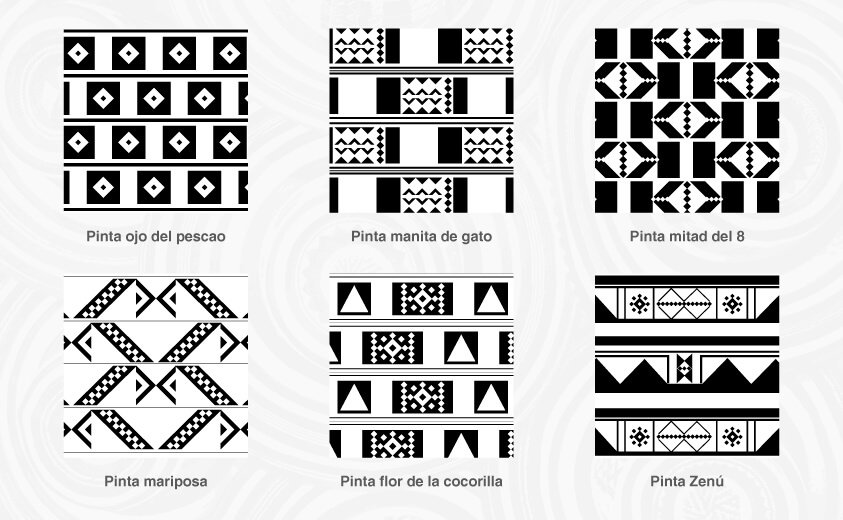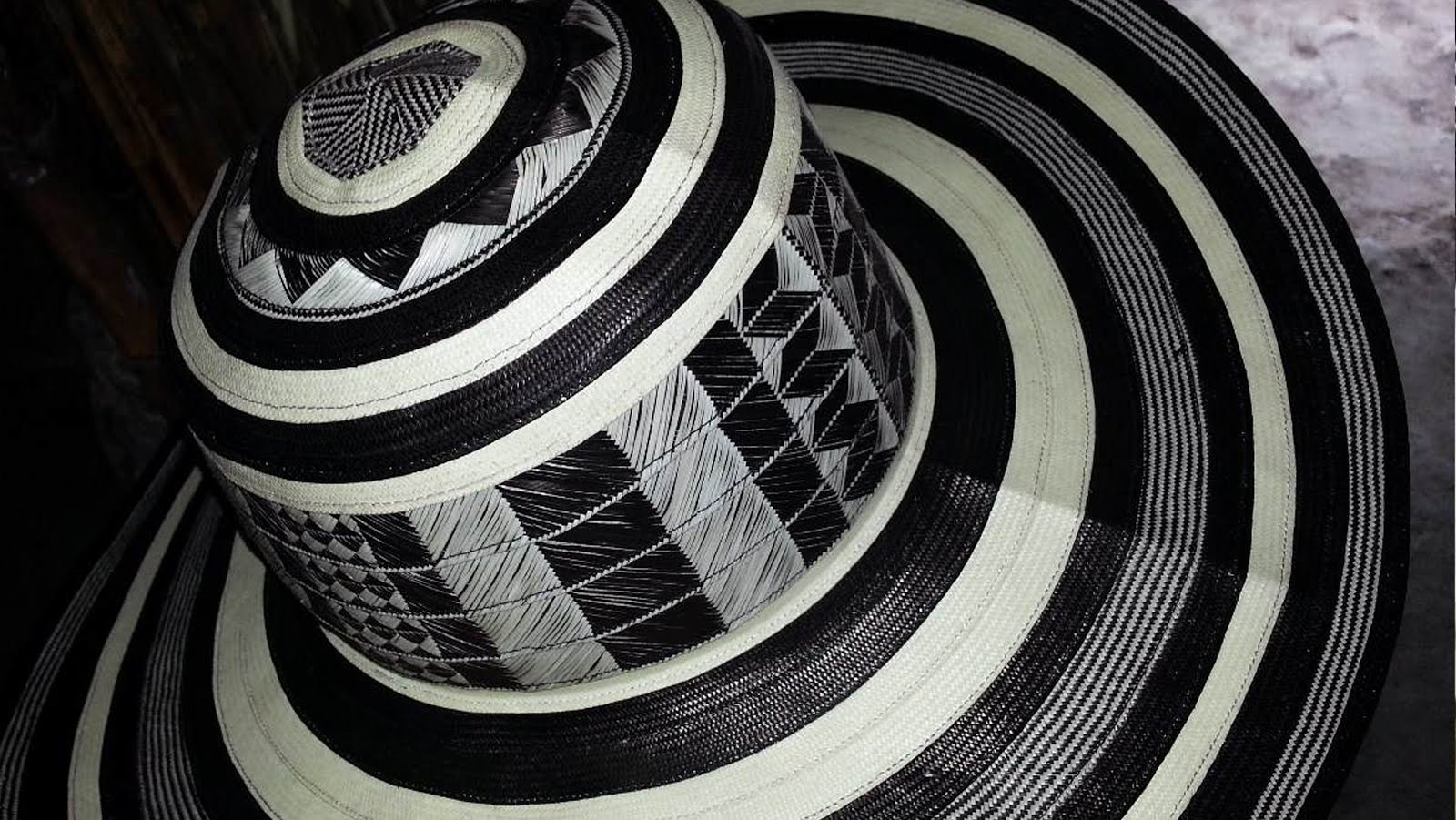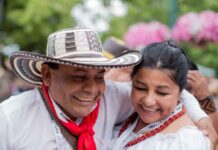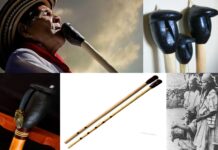El sombrero vueltiao es uno de los máximos símbolos de la artesanía colombiana y de Colombia misma, siendo nombrado en 2004 como Símbolo Cultural de la Nación. Este tiene su origen en la cultura indígena Zenú situada a orillas del rio Sinú en la época prehispánica, también se le conoce como sombrero vueltiao zenú o sombrero sinuano; esta prenda es mucho mas común en las sabanas de Córdoba, Sucre y Bolívar.
Esta prenda era utilizada en la época prehispánica para protegerse del sol durante el cultivo del maíz, también esta asociada a la jerarquía y ritos religiosos de la época; su elaboración es a base de trenzas secas (negras y caquis) sacadas de la caña flecha (palma endémica de las regiones tropicales de américa).

Las partes que conforman el sombrero vueltiao son:
La plantilla, la olma, la copa o encopadura, el ala, el ribete, se puede usar alrededor de la base de la copa una correa pequeña y también se usa un barbuquejo (usualmente un cordón); opcionalmente se puede tejer en el canto interior del ala el nombre del propietario. También nos vamos a encontrar con las pintas, estas son figurillas tejidas a mano con filamentos negros en la copa del sombrero los cuales representan, objetos, animales, totems, objetos religiosos típicos de la cultura y cotidianidad Zenú; cada una de estas pintas son particulares de una familia o comunidad.
(Lea También: Kuisi o Gaita Colombiana)
La calidad del sombrero depende del tipo de fibra usada y de la cantidad de trenzas del mismo, dependiendo de esto el precio puede variar desde los cincuenta mil pesos hasta el millón seiscientos; actualmente existe el sombrero de 15 vueltas, 19 vueltas, 21 vueltas, 23 vueltas, 27 vueltas y 31 vueltas, siendo el primero el mas barato y el ultimo el mas caro. La calidad de los de mayor vueltas es corroborada por la capacidad de doblarse al tamaño de un pañuelo envuelto y volver a su estado original sin imperfección alguna; tanta es la complejidad e importancia de este sombrero que existe una formula matemática para el calculo del numero de trenzas y del sombrero.
Formula Matemática para el Sombrero Vueltiao:
Para determinar el número de la trenza se cuentan los espacios, rombos o pies entre borde y borde de la trenza, que como se ha dicho, siempre es par, siguiendo la serie de los números naturales a partir de dos (2), de modo que “n” sea ocupada por los valores: 2, 4, 6, 8, 10… también puede ser ocupada por los impares: 7 y 9, para dar las trenzas: 17 y 21… en donde n es el número de rombos al través de la trenza y x es el número de pares de fibras de la trenza… recíprocamente los valores de la trenza siguen una serie aritmética cuyo primer término es 7 y la razón es 4, de manera que la serie queda como sigue: 7, 11, 15, 19, 23″.
Así: 2(0 + 1) + 1 = 3; 2(2 + 1) + 1 = 7; 2(4 + 1) + 1 = 11; 2(6 + 1) + 1 = 15; 2(8 + 1) + 1 = 19; 2(10 + 1) + 1 = 23.
Este símbolo artesanal y cultural en Colombia es de los mas importantes, tanto así que anualmente se celebra en Sampués la Feria y el Reinado Nacional del Sombrero Vueltiao y en el municipio de San Andrés de Sotavento se realiza el Festival del Sombrero Vueltiao; En la película de 1981, On Golden Pond (Nuestros años dorados), Katharine Hepburn luce el sombrero vueltiao, Miguel “El Happy” Lora se lo puso al momento de coronarse campeón mundial gallo de boxeo el 9 de agosto de 1985, el Papa Juan Pablo II también lo uso al igual que el presidente Bill Clinton de estados unidos; así mismo ha sido usado por las máximas esferas del espectáculo nacional y usado como indumentaria de los bailes típicos de la caribe colombiano.




